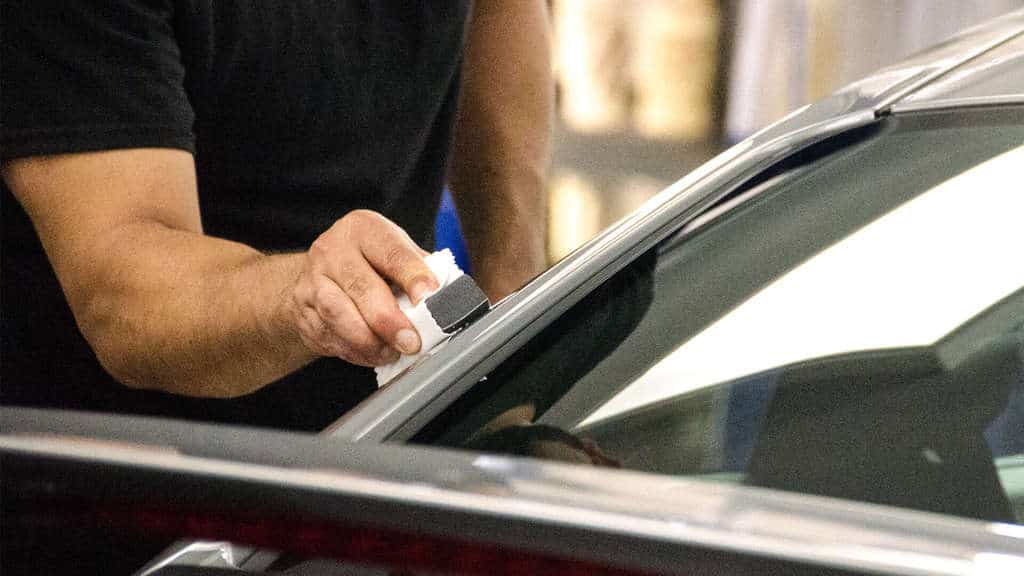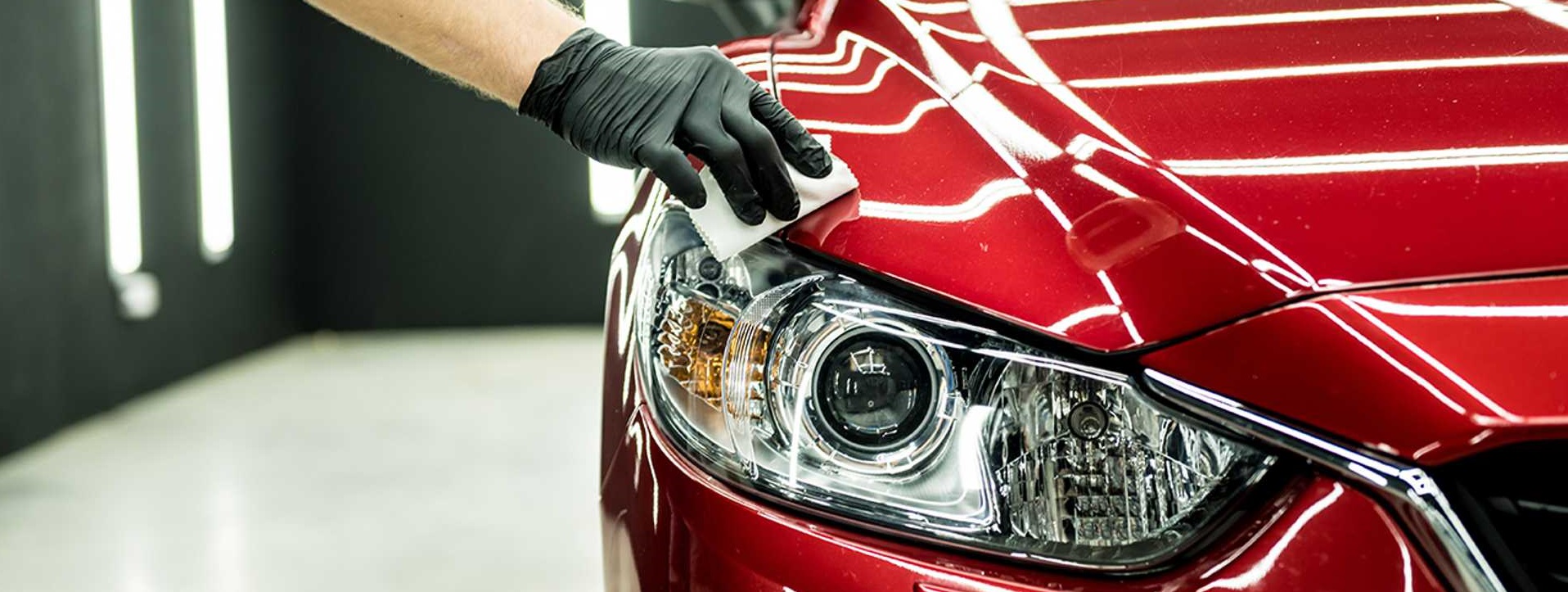Protect Your Car from the Elements with Ceramic Coating Technology
Protect Your Car from the Elements with Ceramic Coating Technology
Blog Article
Ceramic Covering vs. Traditional Wax: Which Gives Better Long-Term Security?
The argument in between ceramic coatings and conventional wax for lorry protection has gathered considerable focus among vehicle fanatics and experts alike. While both satisfy of guarding paint, their distinctions in sturdiness, application, and long-term maintenance prices may influence a customer's option. Ceramic layers boast premium longevity and resistance to ecological variables, yet the intricacy of their application raises concerns concerning ease of access and practicality. As we discover these contrasting options, it ends up being important to take into consideration not just the instant benefits however likewise the effects for vehicle care in time.
Review of Ceramic Finishing
Ceramic covering has actually gotten considerable popularity amongst automobile lovers and detailers alike due to its advanced safety top qualities. This ingenious innovation is made to produce a resilient, hydrophobic guard over a car's paint surface area, significantly boosting its resistance to ecological contaminants such as dust, UV rays, and chemical discolorations. Unlike conventional wax, which supplies a short-term layer of security, ceramic finishings bond at a molecular level with the paint, providing lasting sturdiness-- typically extending beyond two years with appropriate upkeep.
The application process involves thorough prep work of the automobile's surface area, including cleaning and polishing to ensure ideal attachment. When applied, the finishing remedies to create a durable layer that not only adds deepness and gloss to the paint yet additionally streamlines maintenance. With its hydrophobic properties, ceramic covering allows water and dirt to slide off more quickly, lowering the regularity of cleans and reducing the danger of swirl marks.
Moreover, ceramic finishes are available in different formulations, enabling individuals to select products tailored to their specific requirements and choices. In general, ceramic covering represents a considerable innovation in paint security innovation, providing premium efficiency contrasted to standard choices.
Overview of Standard Wax
Traditionally pertained to as a staple in auto care, wax offers as a preferred option for those seeking a straightforward method to boost and shield their lorry's paint - ceramic coating. Automotive wax typically comprises natural components, such as carnauba, or synthetic compounds, made to create a protective layer on the surface of the paint. This layer not only improves the vehicle's gloss and beam but also supplies a barrier versus ecological impurities
The application of wax is usually easy to use, making it available for both specialists and Do it yourself enthusiasts. Once used, wax needs a curing duration, after which it hardens to develop a protective covering.
However, while wax is reliable for enhancing the aesthetic charm of a vehicle, it is very important to note that the security it uses may require more regular reapplication contrasted to alternate items, such as ceramic finishes. Overall, conventional wax stays a popular option for those focusing on ease of use and prompt aesthetic improvement.
Longevity and Durability Contrast
While both ceramic coverings and standard wax deal protective advantages for auto paint, their resilience and durability vary substantially. Traditional wax, typically made from all-natural carnauba or synthetic polymers, normally supplies a safety layer that lasts roughly 3 to six months. This reasonably brief lifespan requires routine reapplication to keep optimum defense.
In comparison, ceramic coverings are engineered from advanced nanotechnology, forming a covalent bond with the paint surface. This results in a durable, hydrophobic layer that can endure for two to five years, depending on the product and environmental problems. The premium durability of ceramic finishes is attributed to their chemical structure, which supplies boosted resistance to scrapes, UV rays, and oxidation.

Protection Against Environmental Elements
Protecting a lorry's paint from environmental variables is vital for maintaining its look and value with time. Automobiles are constantly subjected to a range of aspects, including UV rays, news bird droppings, tree sap, acid rainfall, site here and road grime, every one of which can endanger the stability of the paintwork.
Ceramic coatings supply a durable defense against these environmental assailants. Unlike typical wax, which can deteriorate promptly under UV exposure, ceramic layers form a durable, hydrophobic layer that resists the dangerous results of sunshine and toxic wastes. This sophisticated modern technology creates a chemical bond with the vehicle's surface, supplying remarkable protection that lasts for several years, even in extreme problems.
In contrast, ceramic coatings keep their safety high qualities longer, substantially decreasing the danger of paint damage and ensuring that the lorry retains its aesthetic allure. As a result, ceramic layers are significantly identified as the remarkable selection for long-term defense against environmental elements.
Application and Maintenance Distinctions
The methods of application and subsequent upkeep for ceramic coverings and conventional wax differ substantially, affecting the total user experience and effectiveness of each item. Ceramic finishings call for an even more detailed application procedure, usually involving surface area preparation that includes washing, sanitizing, and brightening the lorry. Once the surface area is ready, the ceramic coating is used in a controlled setting, usually requiring expert proficiency to make sure appropriate curing and bonding to the paint.

While both products boost lorry look, the longer-lasting protection offered by ceramic coverings may warrant their preliminary financial investment, in spite of the even more demanding application process. Conversely, traditional wax continues to be a you can look here preferred option for those looking for an easier, albeit short-term, solution.

Conclusion
To conclude, ceramic finishings demonstrate significant benefits over traditional wax in regards to durability and environmental protection. With a lifespan extending two to 5 years and superior resistance to UV rays, dust, and chemical discolorations, ceramic coatings offer an extra reliable remedy for lasting lorry upkeep. The application procedure might require expert know-how, the resulting cost financial savings and lowered frequency of reapplication underscore the value of ceramic coverings for those looking for ideal automobile defense.
The debate in between ceramic coverings and typical wax for lorry protection has amassed substantial interest among vehicle enthusiasts and professionals alike. Unlike typical wax, which supplies a short-lived layer of security, ceramic layers bond at a molecular level with the paint, providing resilient sturdiness-- frequently extending beyond 2 years with proper maintenance.
While both ceramic coverings and traditional wax deal safety benefits for vehicle paint, their resilience and long life differ considerably. For car lovers looking for long-term protection, ceramic layers present a compelling benefit over conventional wax items.
In final thought, ceramic coatings demonstrate significant advantages over conventional wax in terms of resilience and environmental defense.
Report this page